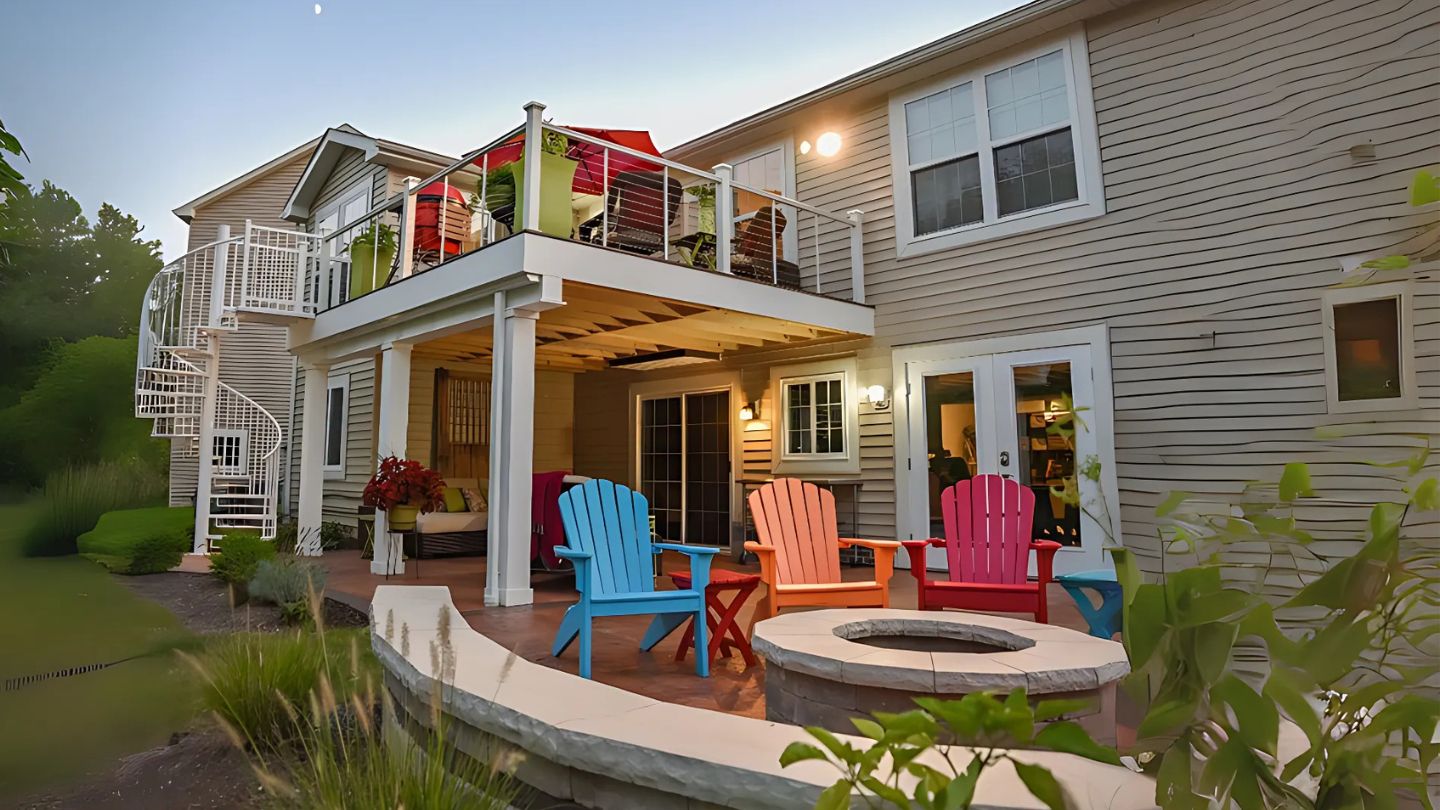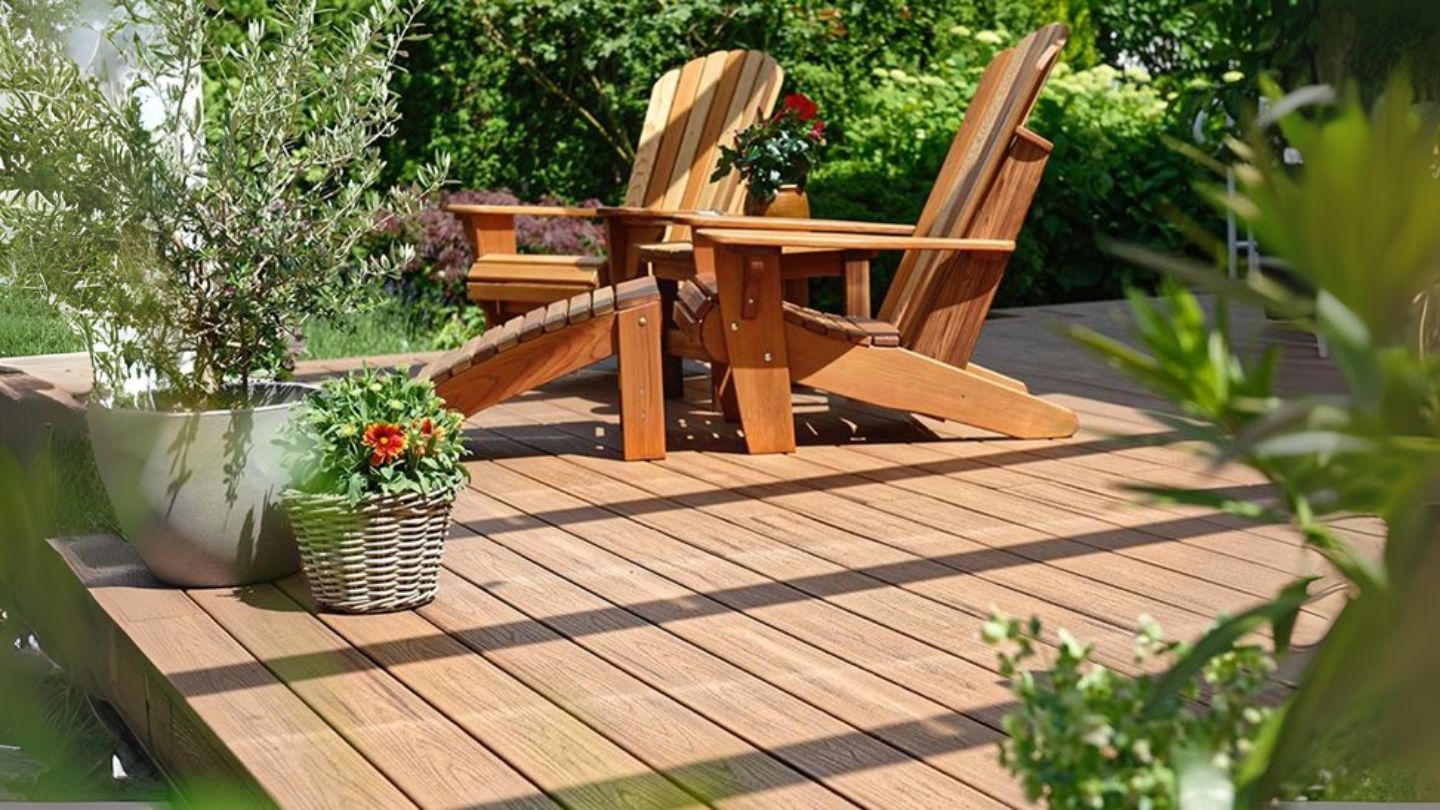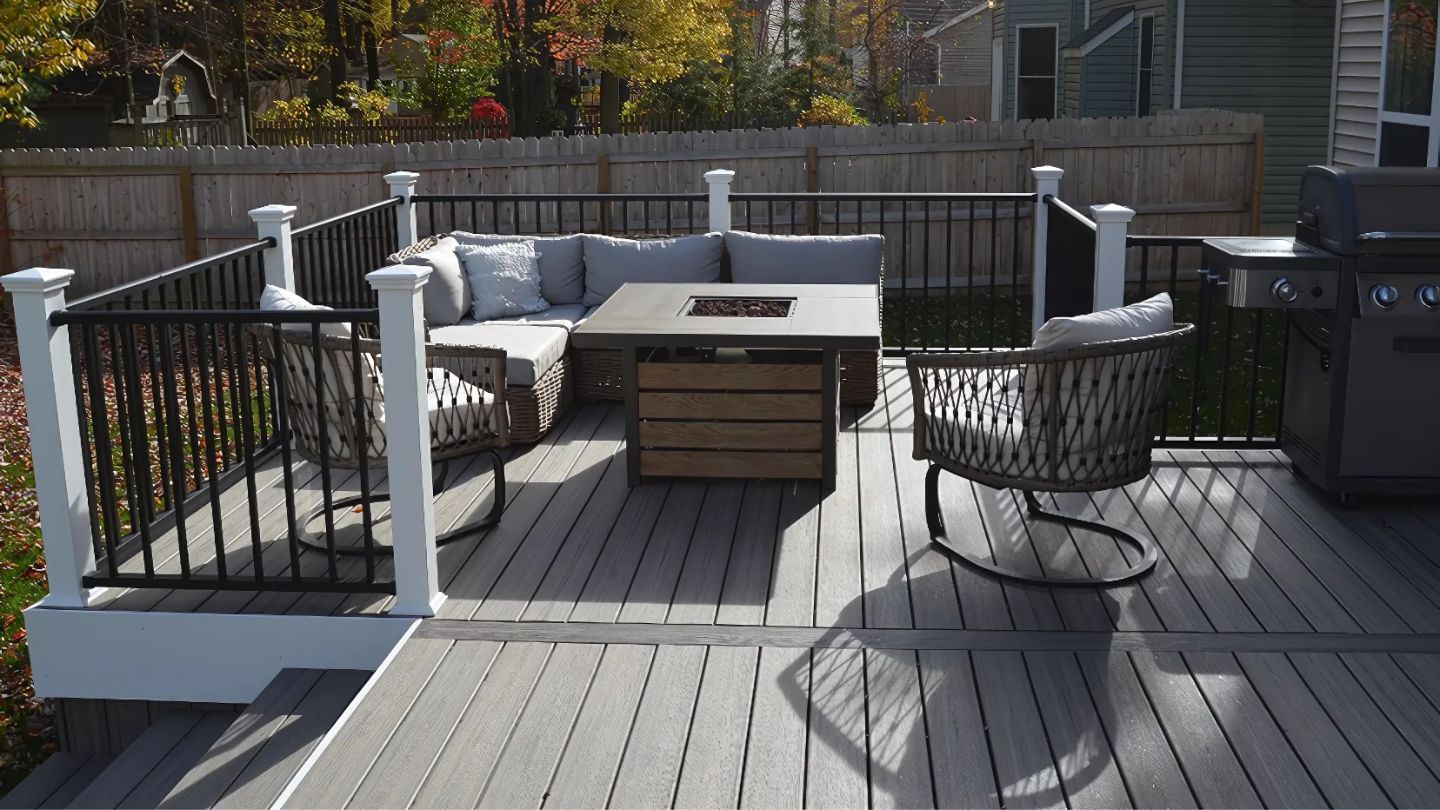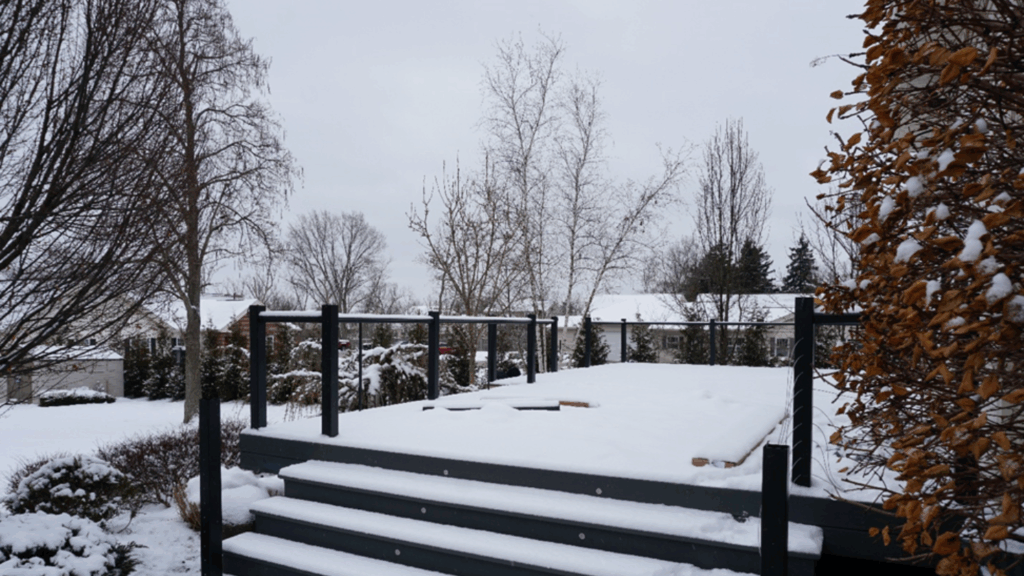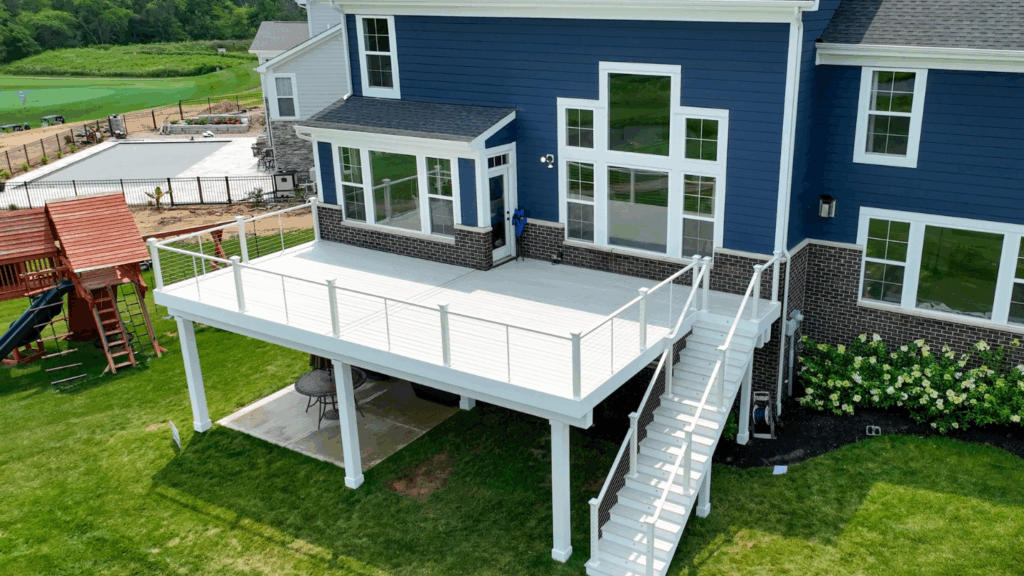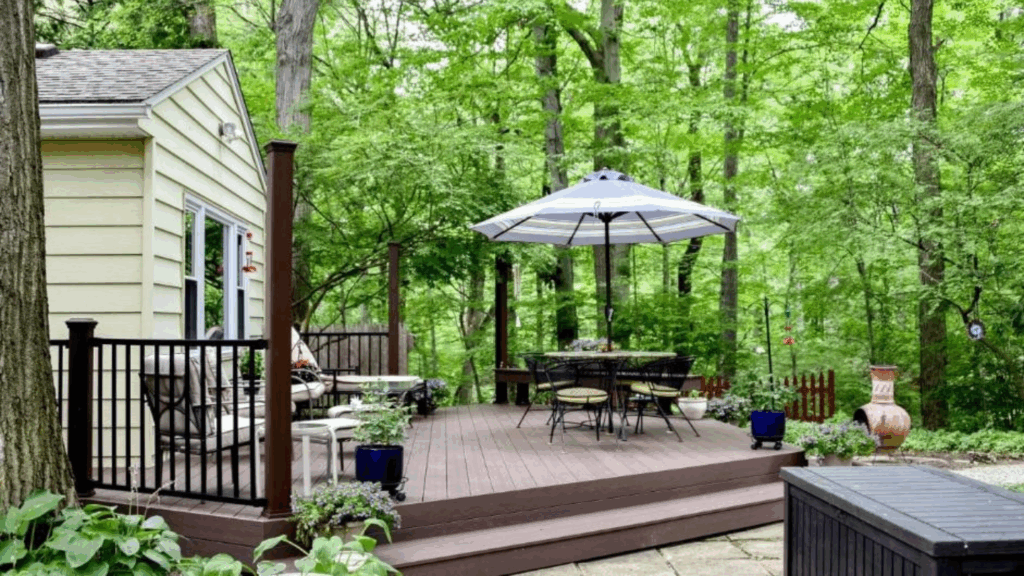Landscaping and deck construction aren’t standalone elements, they are deeply interconnected components of outdoor living spaces. Strategic coordination between decking landscaping efforts and architectural deck design creates a unified outdoor area where aesthetics, functionality, and natural elements seamlessly interact.
Whether you’re designing a new deck or upgrading an existing one, understanding how your landscaping influences form, materials, and traffic flow is critical for creating an inviting and efficient space.
The Symbiotic Relationship Between Landscaping and Decking
Decks don’t exist in isolation, they must work with the surrounding landscape, foliage, grass, grading, and views. This relationship informs everything from size and shape to material choices and placement of stairs or built-in features.
For instance, a sloped yard may require a raised deck to manage elevation changes without excessive excavation. Conversely, a flat, grassy outdoor space could benefit from an expansive, ground-level platform that acts as a natural extension of the home. Trees may offer natural shade, while ponds, water features, or garden beds can serve as focal points that influence deck design and flow.
When planning your outdoor space, choosing the best materials for a durable deck installation ensures your deck withstands harsh weather, heavy foot traffic, and seasonal shifts without warping or fading prematurely.
Harmonizing Visual Aesthetics
Good decking and landscaping design doesn’t just serve practical functions, it enhances the visual appeal of the property. Color palettes, material finishes, and architectural lines must align with both the homes architecture and the natural environment.
Natural wood tones often pair well with lush greenery, while composite decking in gray or charcoal shades might complement more modern, minimalist hardscaping. Borders lined with tall grasses, gravel, or flower beds help establish transitions between the deck area and lawn, creating natural borders.
Designing with Flow in Mind
Flow is a central principle in deck landscape design, influencing how people move through and interact with the space. Flow isn’t just about where the steps go, it’s about creating intuitive pathways that guide activity and enhance usability.
Entry and Exit Points
Landscaping dictates where people will naturally enter or exit the deck. A well-placed path or retaining wall from the garden to the deck draws the eye and encourages movement. If the deck is elevated, landscaping around stairs or under-deck areas can improve accessibility and visual appeal.
Zones and Functionality
Landscaping helps define zones on a deck, such as dining, lounging, or quiet retreat areas. Planters, potted plants, or built-in seating filled with vegetation act as soft dividers, promoting a natural flow without physical barriers.
Raised flower beds next to railings or trellises can add privacy and interest. Integrating lighting, climbing plants, or shrubs can further shape nighttime ambiance and usability.
Landscape Features That Impact Deck Design
To optimize deck and landscape design, several landscaping variables must be assessed during the planning phase:
Sunlight and Shade
Trees, hedges, and other plants influence how much shade the deck receives. This affects decisions about pergolas, awnings, or surface materials; composite decking resists moisture and UV damage better than untreated wood, for instance.
Grading and Drainage
Slope and moisture levels impact where a deck can be installed. Poor drainage can undermine supports or damage finishes. Grading must channel water away from the deck and planting beds to avoid erosion and weed growth.
Root Systems and Trees
Mature trees can serve as natural beauty features, but roots may conflict with structure foundations. Decks can be designed around them or elevated to avoid interference, preserving both tree health and deck integrity.
Material and Color Selection: Influenced by the Landscape
Color, texture, and materials are influenced by the immediate landscaping. A rustic backyard with curved garden beds may favor cedar decking, while a manicured yard with symmetrical flower beds and patio elements may suit darker boards with sleek railings.
The juxtaposition of hard and soft elements, stone pavers, planters, shrubs, and decking, should be curated to establish harmony in tone and texture.
Expert craftsmanship and structural insight are what make all the difference, and how deck builders can improve the home’s outdoor living goes beyond carpentry and transforms underused yards into fully functional extensions of your home.
Low-Maintenance Landscaping and Decking Synergy
Homeowners increasingly prefer low-maintenance outdoor spaces. Composite decking, drought-resistant plants, and minimal weed areas create sustainable synergy.
This design approach aligns well with busy lifestyles and regional challenges like high rainfall or local climate extremes. Integrating hardy ground covers, automatic irrigation, or gravel areas around the deck simplifies upkeep while retaining beauty.
Seasonal Considerations and Long-Term Planning
Beyond summer use, think about seasonal change. Evergreen shrubs or winter-interest plants like red twig dogwood offer visual structure even in colder months. Spring bulbs or fall-color trees ensure the deck area remains an enjoyable viewpoint year-round.
Features like covered seating, integrated lighting, and all-weather patio furniture allow for year-round use. Deck design should accommodate seasonal transitions while keeping traffic flow intact.
Even the most well-constructed deck requires upkeep; knowing how to maintain your custom deck year-round helps preserve its structural integrity and aesthetic value through every season.
Collaboration Is Key to a Successful Outcome
Creating cohesion between deck and landscaping elements calls for expert collaboration. Deck builders must consider site grading, drainage, planting layout, and long-term exposure to weather.
Landscape designers, in turn, must work around posts, stairs, features, and usable space to create functional beauty. Together, these professionals balance form and function, aesthetics and endurance.
When considering upgrades, understanding the role of a deck builder in resurfacing projects is critical to ensuring safety, material compatibility, and long-term performance.
Final Thoughts
In Central Ohio, variations in terrain and local climate demand tailored approaches. Whether you’re dealing with clay-heavy soil, dense foliage, or moisture fluctuations, successful deck designing in Columbus starts with expert planning.
Contact us at Woodland Deck Company to discover how your landscaping vision and deck goals can align to produce a standout outdoor space built for lasting enjoyment.
